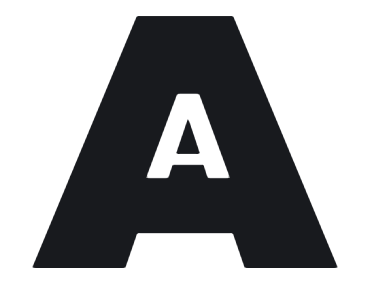- Publication: Advertising Association
- Publication Date: August 1, 2024
- Organizations mentioned: Advertising Association, Google, ISBA, M&C Saatchi, IPA
- Publication Authors: Konrad Shek & Will Lane
- Technical background required: Low
- Estimated read time (original text): 88 minutes
- Sentiment score: 78%, somewhat positive
TLDR:
Goal: The Advertising Association’s AI Taskforce produced this report to showcase applications and promote responsible use of AI in advertising. It aims to demonstrate how AI can enhance efficiency, creativity, and impact in the advertising industry while emphasizing the importance of ethical adoption.
Methodology:
- The report combines insights from various industry leaders and organizations, including case studies and expert opinions.
- It examines AI applications across different aspects of advertising, from strategy and creativity to production and regulatory compliance.
- The authors analyze ethical considerations and best practices for AI adoption in advertising, drawing from real-world examples and industry experiences.
Key findings:
- AI is already transforming advertising across strategy, creativity, production, media buying, and regulatory compliance. Early adopters are seeing significant time and cost savings, with one project evaluation reporting a minimum of 20% and an average of 58% reduction in time spent on various activities.
- Generative AI enables richer creative exploration and expression when used responsibly. Case studies demonstrate AI’s ability to generate brand mascots, personalized audio content, and purpose-driven campaigns that drive meaningful audience engagement.
- The advertising industry must navigate ethical issues such as privacy, intellectual property, fairness, bias, accuracy, transparency, and sustainability in AI adoption. The report emphasizes the importance of developing robust ethical frameworks to guide AI use within the industry.
- AI should be viewed as a collaborative partner that amplifies human ingenuity rather than replacing it entirely. The report highlights that while AI can enhance efficiency and creativity, human oversight and expertise remain crucial.
- AI has the potential to reduce advertising carbon footprint. One study suggested that when comparing writing tasks, AI reduced emissions by 99% compared to a human with a laptop.
Recommendations:
- Implement robust ethical frameworks that prioritize consent, accountability, and core industry values when adopting AI technologies. The report suggests using tools like the Socratic method to foster critical thinking and accountability among advertising professionals.
- Develop high-quality prompts and curate rich training data for AI models. The report emphasizes the importance of strategic prioritization and avoiding the overuse of AI tools, which could negate potential environmental benefits.
- Ensure transparency about when and how AI is being used in advertising. The report recommends clear communication with clients, consumers, and artists about AI involvement in creative processes.
- Protect creative rights and negotiate fair compensation for artists when using their works in AI training. The report highlights the need for mutually beneficial arrangements that respect intellectual property rights.
- Foster collaboration across the industry to develop standards and share learnings on AI adoption. The report suggests that this collaborative approach is essential for addressing the complex challenges posed by AI integration in advertising.
Thinking Critically:
Implications:
- If all organizations in the advertising industry adopt the recommendations for responsible AI use, it could lead to a more ethical, efficient, and creative advertising landscape. This could result in increased consumer trust, better targeted campaigns, and potentially significant cost savings across the industry. However, it might also create a divide between early adopters and those slower to implement AI, potentially reshaping competitive dynamics in the advertising world.
- The emphasis on AI as a collaborative tool rather than a replacement for human creativity could help alleviate fears of job displacement in the creative industries. This approach might lead to the emergence of new roles that blend creative and technical skills, potentially reshaping education and training programs in the advertising and marketing fields.
- The focus on reducing carbon footprint through AI use in advertising could have broader implications for sustainability efforts across industries. If successful, it might inspire other sectors to explore AI applications for environmental benefits, potentially accelerating progress towards global climate goals.
Alternative perspectives:
- The report’s optimistic view of AI’s potential in advertising might underestimate the challenges of implementation, particularly for smaller agencies or brands with limited resources. The costs and complexities of adopting advanced AI systems could potentially widen the gap between large and small players in the industry.
- While the report emphasizes the importance of ethical AI use, it may not fully address the potential for AI to exacerbate existing biases in advertising. There’s a risk that AI systems, if not carefully designed and monitored, could perpetuate or even amplify societal stereotypes and discriminatory practices in ad targeting and content creation.
- The report’s focus on AI’s creative potential might overlook the value of human unpredictability and intuition in advertising. There’s an argument to be made that truly groundbreaking creative ideas often come from human experiences and emotions that AI may not be able to replicate or fully understand.
AI predictions:
- Within the next five years, we’ll see the emergence of AI-human hybrid creative teams as the norm in leading advertising agencies. These teams will leverage AI for data analysis, rapid prototyping, and personalization at scale, while human creatives focus on high-level strategy and emotional resonance.
- By 2030, AI-driven dynamic advertising will become prevalent, with ads that adapt in real-time to individual viewers’ preferences, contexts, and emotional states. This will lead to a significant increase in advertising effectiveness but will also raise new privacy and ethical concerns.
- In the next decade, we’ll see the rise of AI-powered virtual influencers and brand ambassadors that can interact with consumers 24/7 across multiple platforms. These AI entities will become increasingly sophisticated, blurring the lines between human and artificial brand representations and potentially reshaping influencer marketing.
Glossary:
- Active Ad Monitoring: A set of machine learning and AI-based tools developed by the ASA to capture and process large volumes of ads for identifying the most relevant ones for regulatory review.
- Brand Image models: Custom AI models developed by VCCP/faith that extend the capabilities of Stable Diffusion to generate visual assets that correctly use a brand character or mimic a brand’s illustration style.
- Brand Copy models: Custom AI models developed by VCCP/faith that extend the capabilities of GPT-4 to check or generate copy against a brand’s tone of voice.
- Synthetic focus groups: AI-simulated focus group discussions used for gathering consumer insights during the early stages of strategy development.
- Audio Journeys: A generative AI experience combining ChatGPT with voice AI to produce personalized audio books featuring a family’s own road trip locations and narrated by a celebrity.
- Bubl Generator: A custom-trained image model based on Stable Diffusion that generates images of O2’s brand mascot Bubl in various contexts.
- Hope Sogni: An AI-created hypothetical FIFA presidential candidate representing the collective voices of women in football to challenge leadership and governance issues.
- AI-assisted Collective Ad Regulation: The ASA’s new five-year strategy focusing on using AI capabilities to enhance regulatory effectiveness in the advertising industry.
Members also get access to our comprehensive database of AI tools and fundraising



 Join hosts Anthony, Shane, and Francesca for essential insights on AI's impact on jobs, careers, and business. Stay ahead of the curve – listen now!
Join hosts Anthony, Shane, and Francesca for essential insights on AI's impact on jobs, careers, and business. Stay ahead of the curve – listen now!


